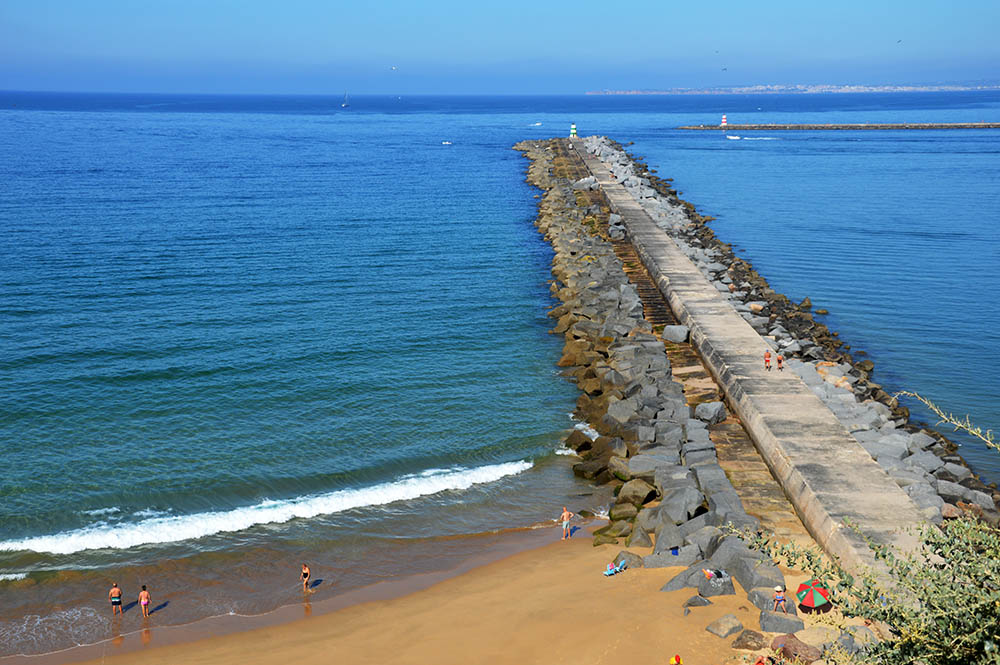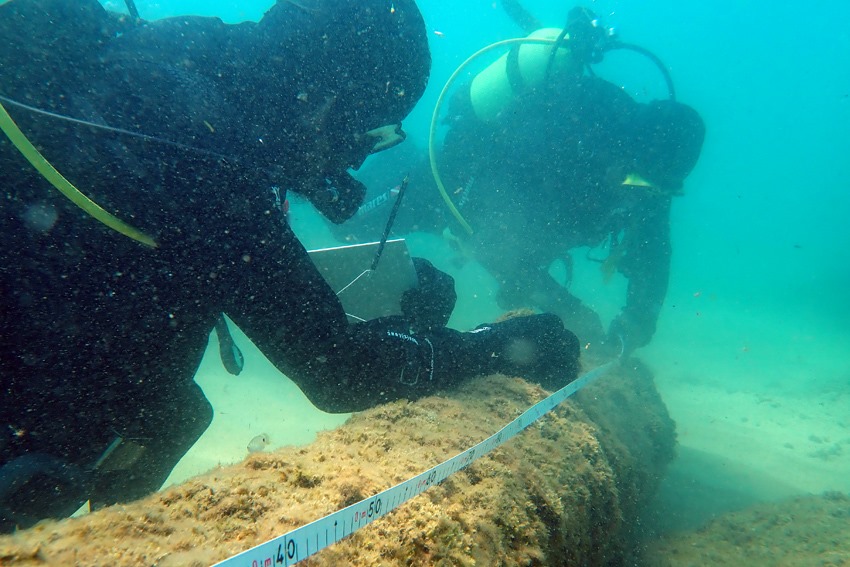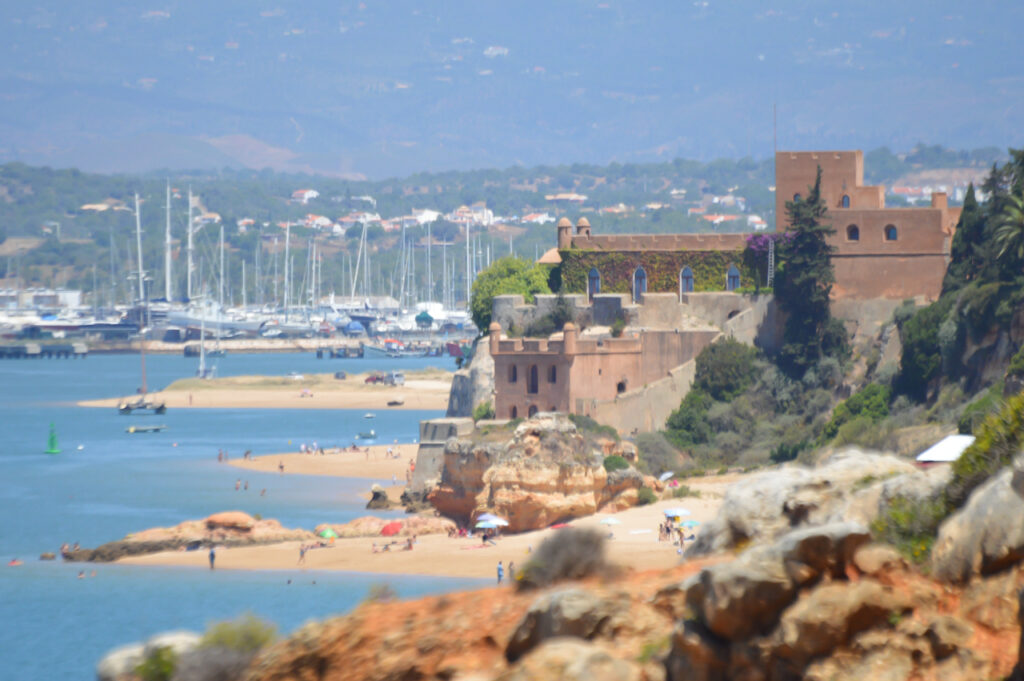The Environmental Impact Assessment Commission (CAIA) of the “Deepening and Widening of the Navigation Channel of the Port of Portimão” project proposed a few days ago the “issuance of an unfavorable opinion”.
But this still doesn't mean the lead project, which, going forward, will involve a vast campaign of dredging and several other profound changes in the Arade estuary.
Because, based on this proposal for a decision by CAIA, the Portuguese Environment Agency (APA), as the Environmental Impact Assessment authority, «prepared a proposal for an Environmental Impact Statement (DIA), which was notified to the proponent on 24 September 2020, for the purpose of hearing interested parties».
Answering a question from Sul Informação, the press office of the APA explained that, "if the proponent [the Administration of the Ports of Sines and Algarve, APS] pronounces itself in the audience of interested parties, the APA may also take additional steps to analyze this pronouncement, providing then of a maximum period of 20 working days for the issuance of the respective DIA».
In other words, the APS still has the chance to, these days, pronounce on the DIA that has already been communicated to it by the APA (but whose content, which is supposed to be negative, this entity has not yet revealed).
Bearing in mind that CAIA's 103-page final report Sul Informação had access, proposes numerous changes, reformulations and additions to the project and the respective EIA, it is also possible to assume that the Port of Portimão expansion project, in which an investment of several tens of millions of euros is foreseen, will not die with this first lead. It is admitted that it will be reformulated and subject to a new Environmental Impact Assessment process.
The current CAIA report points to the existence of numerous "gaps" as well as "several poorly defined situations without any concrete or sustained assessment" in the Environmental Impact Study, promoted by the APS, which, curiously, in the case of an intervention in a port area, it is simultaneously the proponent and the entity that licenses the work.
From the outset, "gaps" in the economic parameters, since it does not take into account that the project to widen the maneuvering basin and deepen the channel, to allow the entry of large cruise ships into the Port of Portimão, "will induce radical changes in a 'fitted' area between villages, changing the way the space will be seen and experienced».
«The presence of new mobile structures (large ships) as well as the arrival of a large number of visitors, in a short period of time, will change the experience of populations, in addition to inducing indirect impacts in many other areas (including areas of special natural value located in the surroundings), which was not even addressed”, the report adds.
Then, because the project is based on the assumption that Marina de Ferragudo will not move forward, despite the fact that the process is still being decided by the Administrative Court.

As for the disposal of the dredged materials, which were at the origin of the protests by the Chamber of Lagoa, of the Parish Council of Ferragudo, and of citizen movements (protests translated into negative opinions sent in the public discussion phase of the AIA), the report considers that its deposition is foreseen «in places that were not analyzed in the EIA, not even being done, in this document , any mention of its existence, nor in the documents that were subsequently presented'.
They also consider the recommended solution (of future use of the sediments, with a temporary deposit in an area of port jurisdiction, not identified in the documents presented) as "inappropriate", since the processing of this sand should take place within the scope of the intervention to be undertaken and not in a second indefinite moment'. In other words, the intention is to avoid what happened in previous dredging, when huge piles of sediment were deposited for years and years on the banks of the Arade, in Ferragudo, waiting for a solution that never arrived…so that a large part of these sediments they ended up in the river, by the action of wind and rain.
However, CAIA points out, even if a solution is put forward for the deposition of better quality dredged sand on the beaches, to replenish the sands (namely in Pintadinho and Molhe, on the edge of the municipality of Lagoa), «bearing in mind the recognized quality of the beach of the jetty for the practice of surf e bodyboard at a regional level, the feedback of this beach should have been analysed/developed, taking this particularity into account, in order to avoid the loss of quality and, if possible, improve the conditions for the practice of these water sports».
The report also draws attention to the fact that the dredging works to widen the vessel maneuvering basin in the Port of Portimão and deepen access, as well as the complementary works, have a strong impact on the quality of water inside and outside the estuary, in fisheries, in an aquaculture structure offshore, and, above all, at an environmental level.
Here, the main issues have to do with the preservation of two species of dolphins, which use the area (boto and bottlenose), of the marine prairies formed by zoster noltii (fundamentals such as maternity and fish ponds), of the coral gardens, located off the mouth, of fish such as menhaden (alosa fallax) or the eel (Eel anguilla), or the emblematic seahorse (in the Arade there are two species: hippocampus hippocampus e hippocampus guttulatus), which has a 'population residing in the estuary'.
From the outset, the report proposes several mitigating measures, new studies and corrections. One of them has to do with the direct pollution caused by large cruise ships, which, if the works are carried out, could enter the tight Arade estuary. The document considers that "any licensing can only be considered as long as (…) alternatives to the permanent operation of combustion engines are considered during the periods when ships are berthed, thus avoiding an increase in air and water pollution".

As for cultural heritage, CAIA concludes that the impacts of the works are “negative and extremely significant, remaining very significant even after the adoption of minimization and/or compensation measures”.
In fact, the report considers that «the Cultural Heritage factor has gaps that condition the impact assessment carried out».
One of the main concerns is the Castle of São João do Arade, where the project foresees «actions to remove rocks using explosives where the building and walls of the Property of Public Interest are installed» of that historic building located in Ferragudo, at the entrance of the Arade estuary.
But there is still concern about the vast underwater heritage already identified or to be identified. The EIA, which was under public discussion, admits the existence of “28 heritage occurrences and two Areas of Archaeological Sensitivity, corresponding to 1 classified Site – São João de Arade Castle; 2 Areas of Archaeological Sensitivity, one with 8 isolated finds and 3 wrecks and another with an indication of 4 archaeological sites from the Roman period that are associated with an ancient landing site; 6 submerged archeological sites (namely an undetermined wreck, one from the Middle/Modern Age, another generically framed in the Modern period, another one from the 6th-16th century and two from the Contemporary period), and a large area called "Area of High Sensitivity" Underwater. This area has already collected several assets, and it is here that XNUMX archaeological sites and XNUMX anomalies are located, thus being considered a long diachronic anchorage with high archaeological potential».
Therefore, among the measures recommended in the CAIA report, is the need to "guarantee the preservation and conservation of the Property of Public Interest of the Castle of São João do Arade (...) preventing its destruction, deterioration or loss", as well as the need, before proceeding with any works, namely dredging, to promote all the necessary archaeological work.
For this, says CAIA, there must be "a timetable for the work", which "should include the time necessary for the proper execution of measures to safeguard the Cultural Heritage, namely for carrying out all archaeological work".
Thus, “intensive systematic prospecting and archaeological surveys should be carried out in a 10 in 10m mesh in the High Archaeological Sensitivity Area 1 (AES 01), as well as in each of the archaeological sites Arade 1 (OC 17), Arade 17 (OC 15), Arade 22 (OC 11), Arade 23 (OC 03) with the aim of carrying out a complementary characterization».
It will also have to systematize 'existing information, visually and systematically revisit the area, as well as carry out archaeological surveys in case of need at the archaeological sites Arade 5 (OC 21), Arade 6 (OC 14), Arade 7 ( OC 23), Arade 8 (OC 25) and Rio Arade – Amphoras dredged 1 (CNS 22230), as well as at the Arade 20? (OC 24), Arade 27 (OC 08), Arade 28 (OC 10) and Fialho 2 (OC 26)».
In addition, "in the protection areas of archaeological sites and in Areas of High Archaeological Sensitivity, mechanical dredgers must be used to ensure direct observation of the inert material that is being dredged", so as to be able to immediately detect if it appears in the mouth of the dredger. some archaeological material.

During the Public Consultation, 89 exhibitions were received, of which only the National Civil Aviation Authority (ANAC) and Turismo de Portugal presented a favorable opinion, while the remaining exhibitions presented an unfavorable opinion to the execution of the project.
They presented their opinion in this process, as external entities, the Lagoa City Council, Ferragudo Parish Council, the National Emergency and Civil Protection Authority, Turismo de Portugal, the National Civil Aviation Authority, the Humanities Center (CHAM), Inter-university Research Unit of the Faculty of Social and Human Sciences of the Universidade Nova de Lisboa and the Universidade dos Azores (FCSH/NOVA/UAç), the companies MARGUDO – Empreendimentos Turísticos, Marítimos e Imobiliários, SA, Marinas de Barlavento – Empreendimentos Turísticos, SA and Sociedade Imobiliária S. João do Arade SA, the Association “For the Defense of Ribeira de Quarteira- No to Cidade Lacustre”, the “Glocal” association Faro”, the Download Platform, the Civic Movement “The Last Window to the Sea” and 76 Citizens. The Portimão City Council did not comment at this stage.
The Evaluation Committee includes the Portuguese Environment Agency, the Institute for the Conservation of Nature and Forests (ICNF), the Directorate-General for Cultural Heritage (DGPC), Directorate-General for Natural Resources, Security and Maritime Services, the Commission of Coordination and Regional Development of the Algarve, the Regional Health Administration of the Algarve, the Portuguese Institute of the Sea and the Atmosphere (IPMA), and also the Higher Institute of Agronomy/Center for Applied Ecology Prof. Baeta Neves (ISA/CEABN).
After the period for any allegations of the Administration of the Ports of Sines and Algarve, the APA will then issue and disseminate the Environmental Impact Statement, which «will then be made available to the public through the EIA Information System». available by clicking here.
Help us to do the Sul Informação!
Contribute your donation so that we can continue to make your journal!
Click here to support us (Paypal)
Or use our IBAN PT50 0018 0003 38929600020 44



















Comments